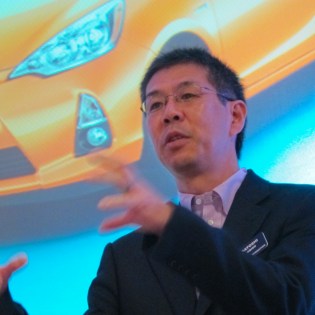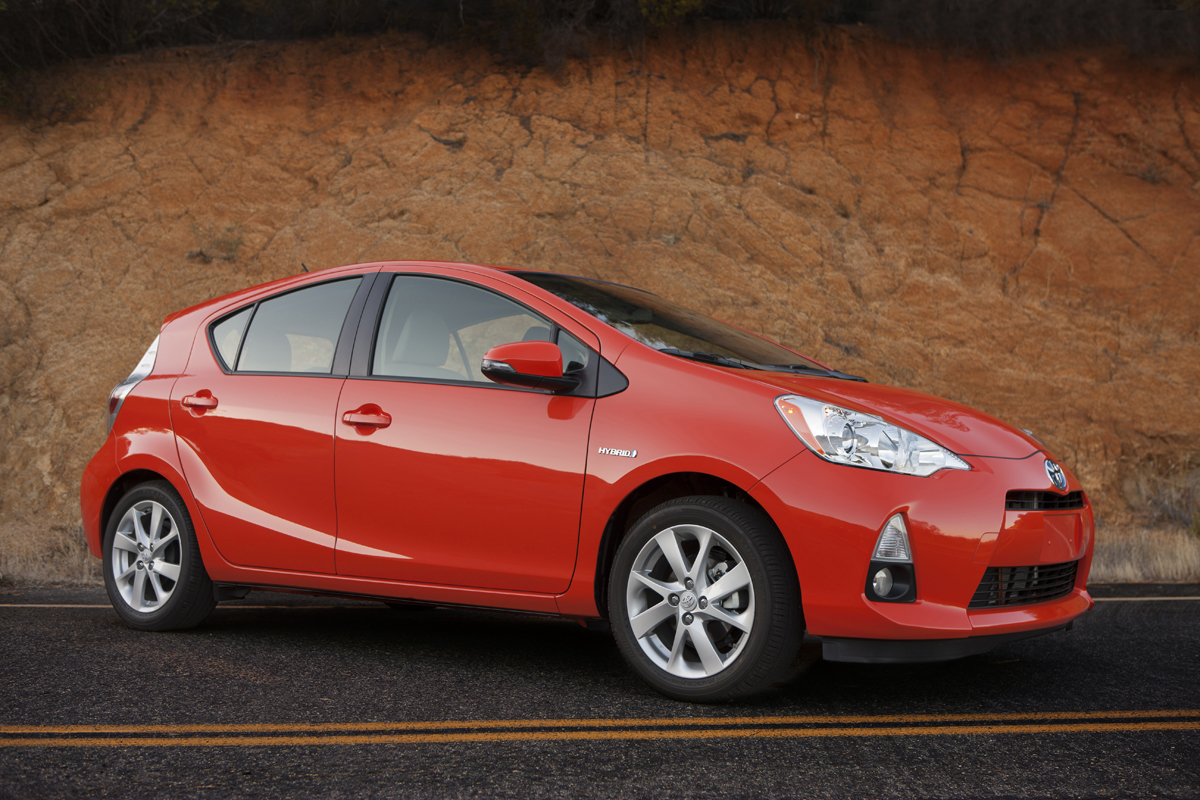
The Toyota Prius C.
Cross-posted from The Phoenix Sun.
It’s getting toward sunset and I’m lost, sitting behind the wheel of a cherry-red Prius C prototype, at the bottom of a very steep hill somewhere in the urban wilds of San Diego.
My driving partner, Melissa Hincha-Ownby, looks over and flashes a big grin. In addition to being an auto geek, the MNN blogger is also a mind reader. “Go for it!” she cries.
I do — jamming the pedal to the metal.
Imagine the smell of burning rubber as we rocket up the hill, the acceleration slamming us back into our seats. Then get your imagination recalibrated.
This newest addition to the family is still a Prius, after all, one of the most fuel-efficient vehicles on the road. And, with an estimated in-town rating of 53 mpg, the C is the most efficient hybrid vehicle on the market. No. This is not a muscle car.
Still, the C is the nimblest incarnation of the world’s best-selling hybrid, and we happily zoom up the hill with no hesitation, strain, or detectable shudder. The engine is slightly smaller than the standard model, but reduced weight and improved aerodynamics compensate for the lower horsepower.
I had been skeptical at the morning briefing when Toyota’s chief Prius engineer, Satoshi Ogiso, described the C as “feisty.” Feisty is still a stretch. But this scaled-down version of the Prius is surprisingly fun to drive. At just 2,496 pounds, the C is the lightest Prius sold — by more than 500 pounds. The tires have been pushed to the outside of the frame, giving the C a wider stance. (Must get image of Larry Craig out of my head!) The car’s nickel-metal hydride battery has been moved forward and dropped down, lowering the center of gravity and giving the C more stability cornering.

The new Prius is "feisty," says Toyota engineer Satoshi Ogiso. (Photo by Osha Gray Davidson.)
The C stands for “city,” according to Toyota, but “compact” fits, too. The new model is a full 19 inches shorter than the liftback, as the original Prius has been renamed. “Cheaper” would also apply, with the C starting at $18,950.
Trunk space is limited, but with the rear seats folded down, the total cargo area is a decent 17.1 cubic feet, enough for groceries or even a bike or two.
Performance, efficiency, room. That brings us to, um, aesthetics.
No one has ever called the Prius the world’s most beautiful car, and the C is unlikely to change that. Still, the redesigned back end and changed proportions have made the car physically attractive. Maybe the ugly duckling hasn’t become a swan, but it has developed into a perfectly nice duck. If aesthetics kept the Prius out of the running for some buyers, the new Prius C — with its great mileage, lower price, supple handling, and good looks — should appeal to a new generation of green-car buyers.



